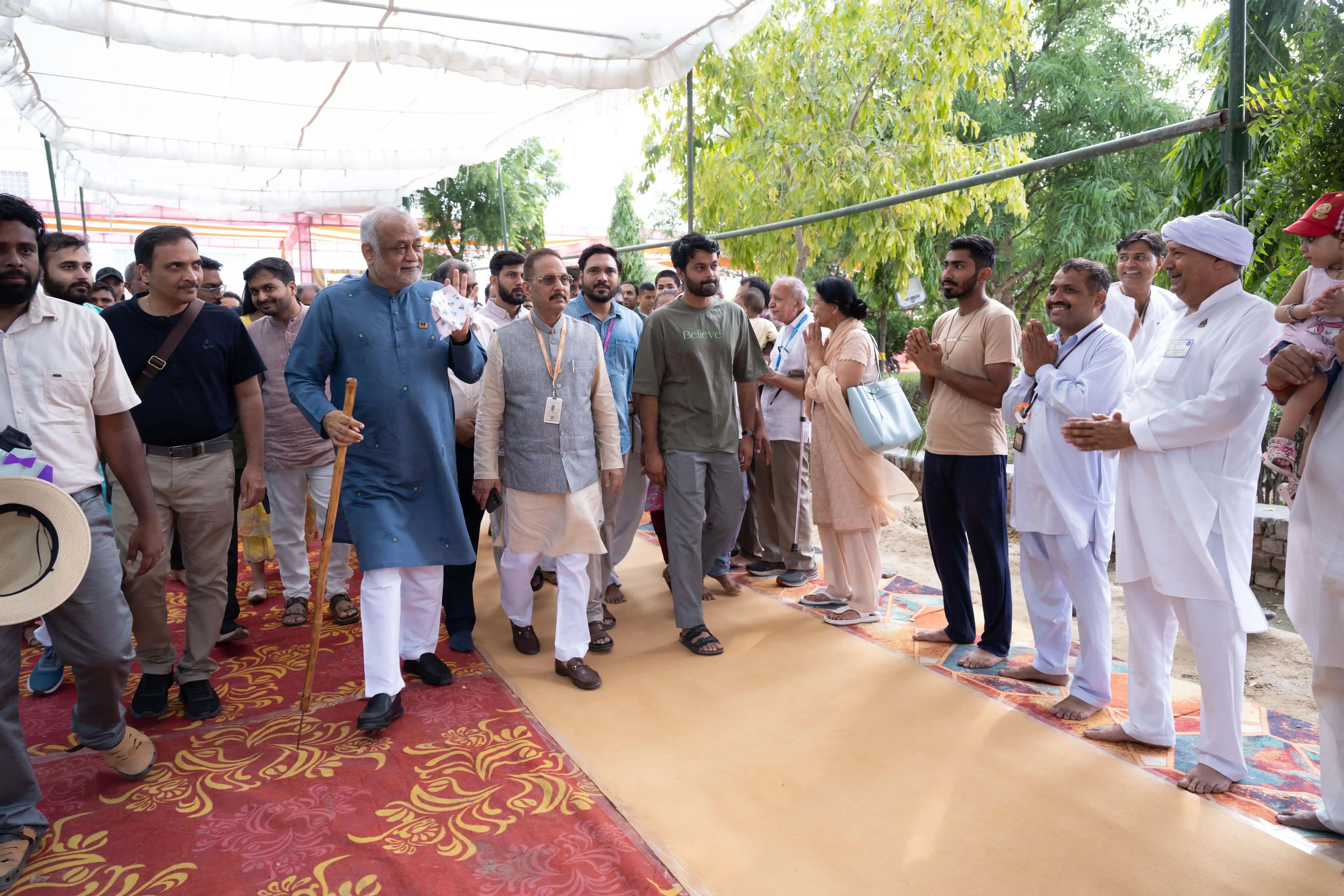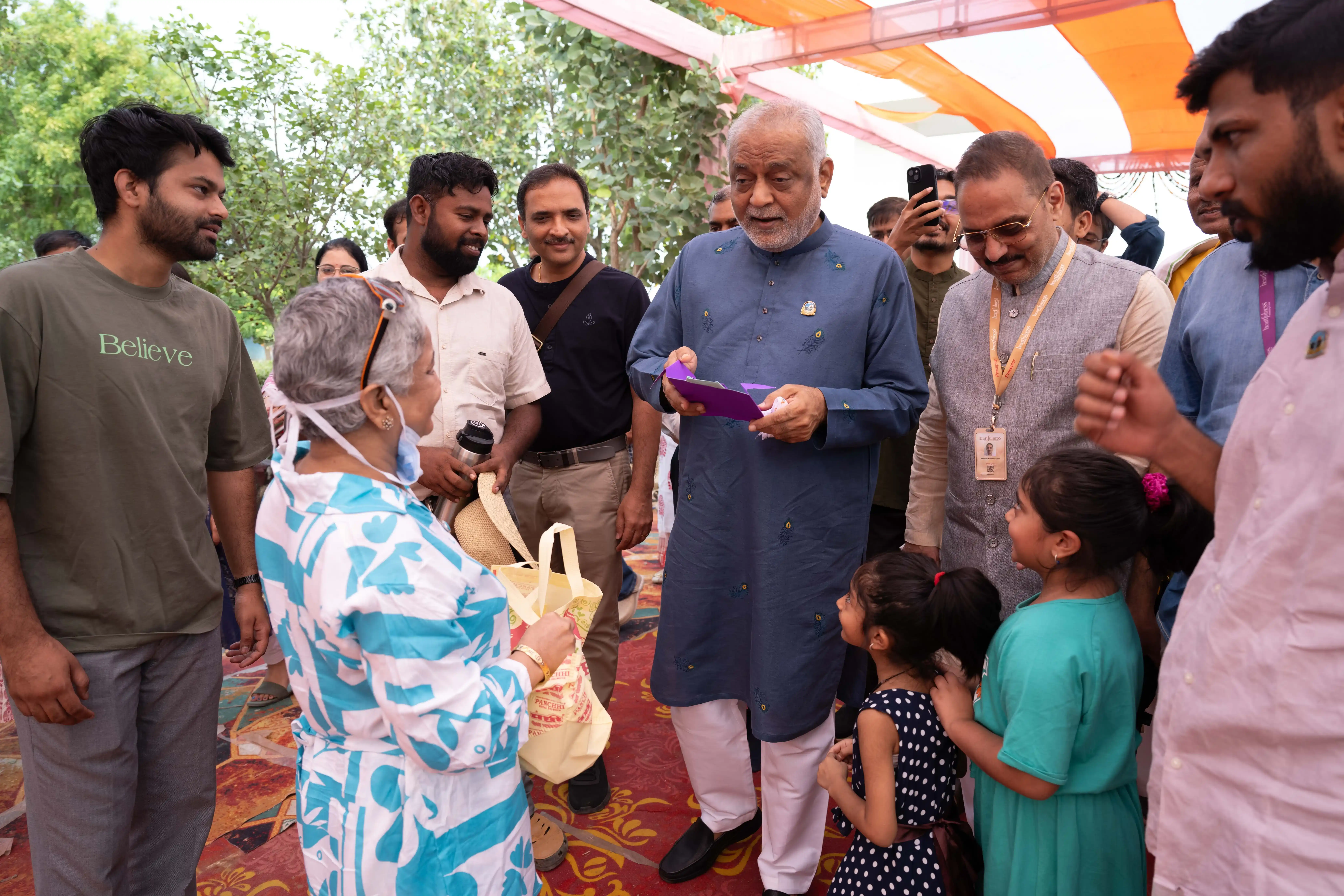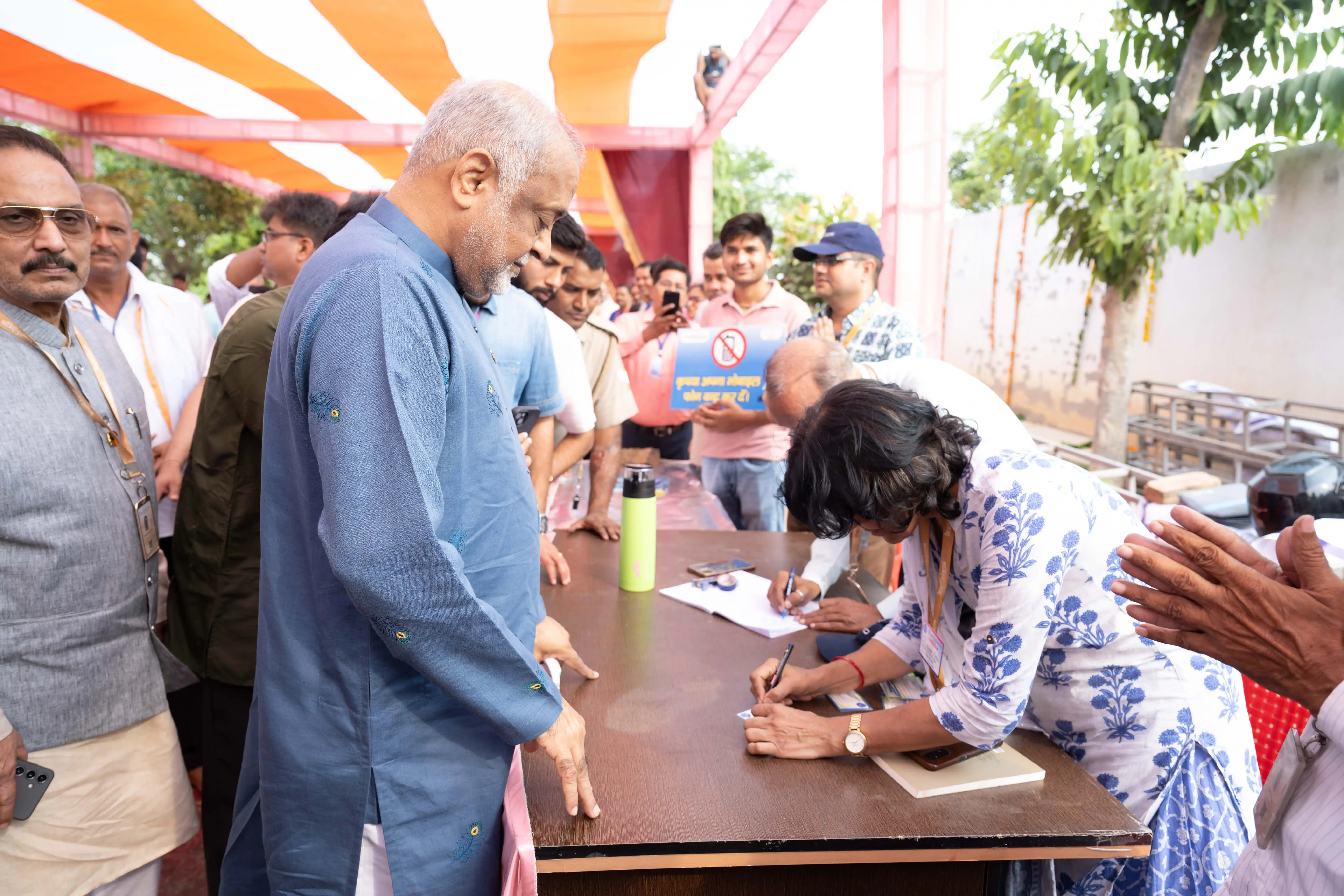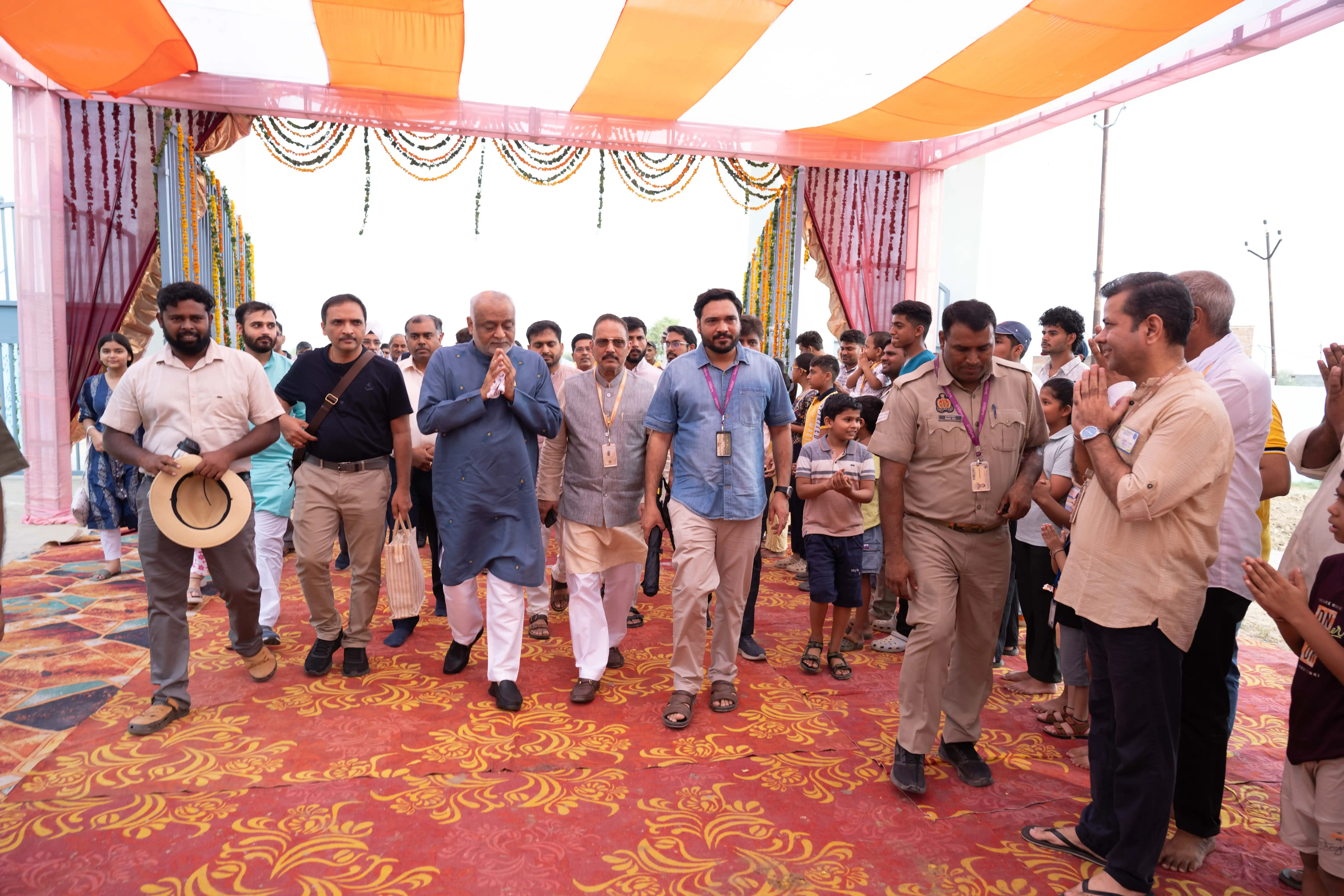A live journal of blessed activities in and around Kanha with Daaji
Simple tips to avoid making mistakes by Daaji
Archive
Last 5 entries
Mathura and Iglas, Uttar Pradesh, 14th to 16th June 2025
Daaji’s journey through Uttar Pradesh reached a meaningful milestone with his visit to Mathura and Iglas, where he shared profound pearls of wisdom with the abhyasis gathered there.
Daaji spoke openly about the weight he experienced in this place — not physical, but subtle. This was the land of Lord Krishna’s birth, a place held sacred in the Hindu tradition. Yet Daaji noted that the history here was not peaceful. It was a birthplace surrounded by violence and trauma; Lord Krishna’s parents, Devaki and Vasudeva, were imprisoned, and several of his siblings were killed by Kamsa, the tyrant king. Lord Krishna himself was born in hiding, under threat. Moreover, many who tried to oppose Kamsa were killed. Little wonder then that Lord Krishna later on left this place and took up abode in a barren land like Dwarka in Saurashtra.
14 June
Daaji reached the Satoha ashram in Mathura around 7:30 pm. The newly renovated ashram is situated in a high-security, yet serene zone, just steps away from the sacred site of Lord Krishna’s birthplace. The ashram building now includes rooms on the first floor, a spacious meditation hall, and a dining area in the basement.
The hall was already full of abhyasis who had been waiting patiently, yet eagerly for Daaji’s arrival. Daaji entered quietly and conducted meditation. Later, he retired to his room for work and rest.
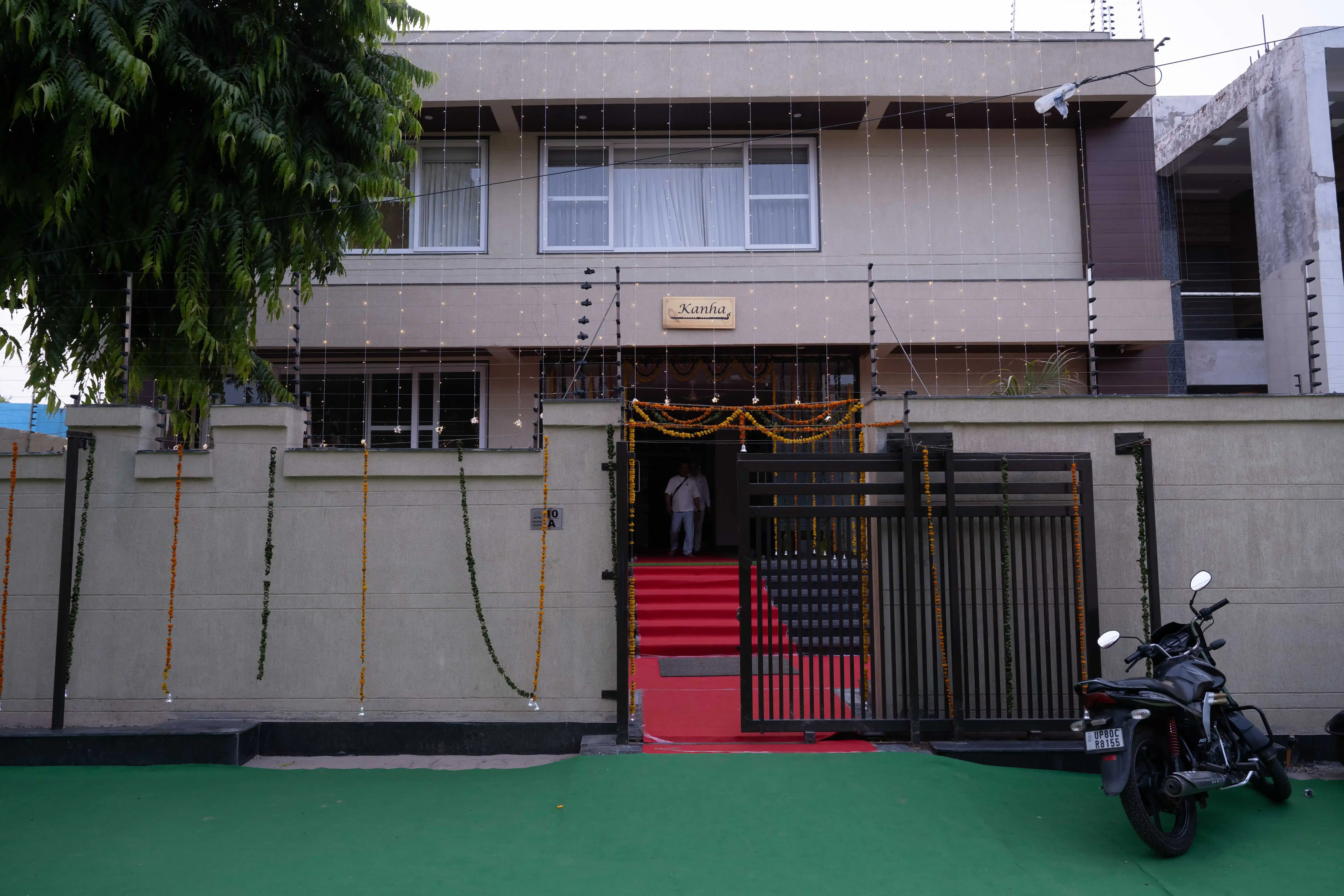

15 June
The morning meditation was scheduled for 7:30 a.m. The atmosphere was calm. Daaji took his seat in the hall and began the meditation. It ended around 8:15 a.m., followed by a short address in Hindi.
Daaji spoke openly about the weight he experienced in this place — not physical, but subtle. This was the land of Lord Krishna’s birth, a place held sacred in the Hindu tradition. Yet Daaji noted that the history here was not peaceful. It was a birthplace surrounded by violence and trauma; Lord Krishna’s parents, Devaki and Vasudeva, were imprisoned, and several of his siblings were killed by Kamsa, the tyrant king. Lord Krishna himself was born in hiding, under threat. Moreover, many who tried to oppose Kamsa were killed. Little wonder then that Lord Krishna later on left this place and took up abode in a barren land like Dwarka in Saurashtra.
Daaji said, “Wherever we see structures from the sixteenth and seventeenth centuries, when the Mughal invasion took place, it wasn’t just seven or eight people who died—millions perished. Just think how much tension and suffering must have gone into building those mosques.”
Daaji clarified, “This land holds impressions of great pain, trials and tribulations,” he said, “and this too must be cleaned. Let us pray that all these impressions are removed forever. Perhaps that is why we have come together here in Sahaj Marg. And let us also pray that this atmosphere of tension that has built up may dissolve away forever.”
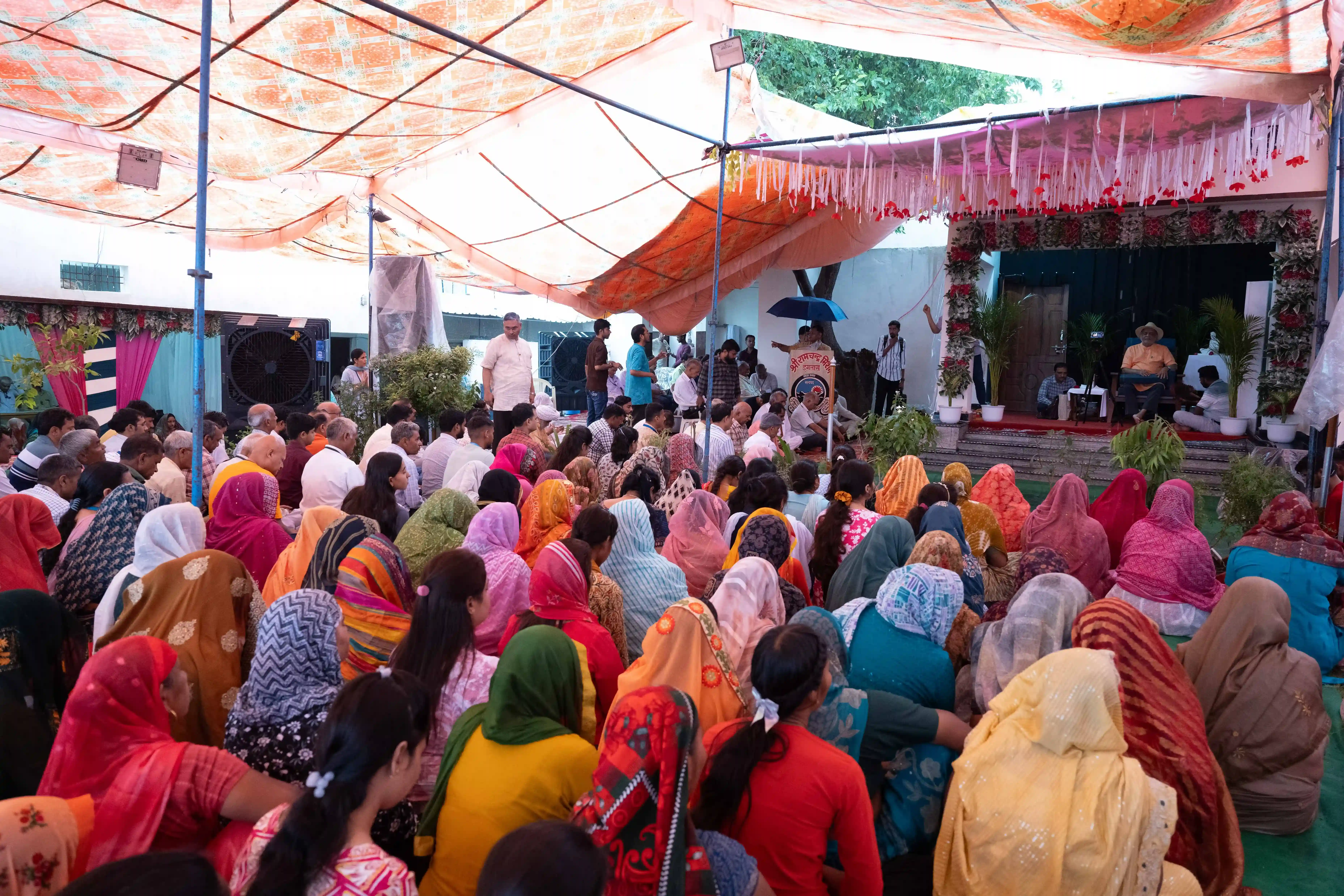

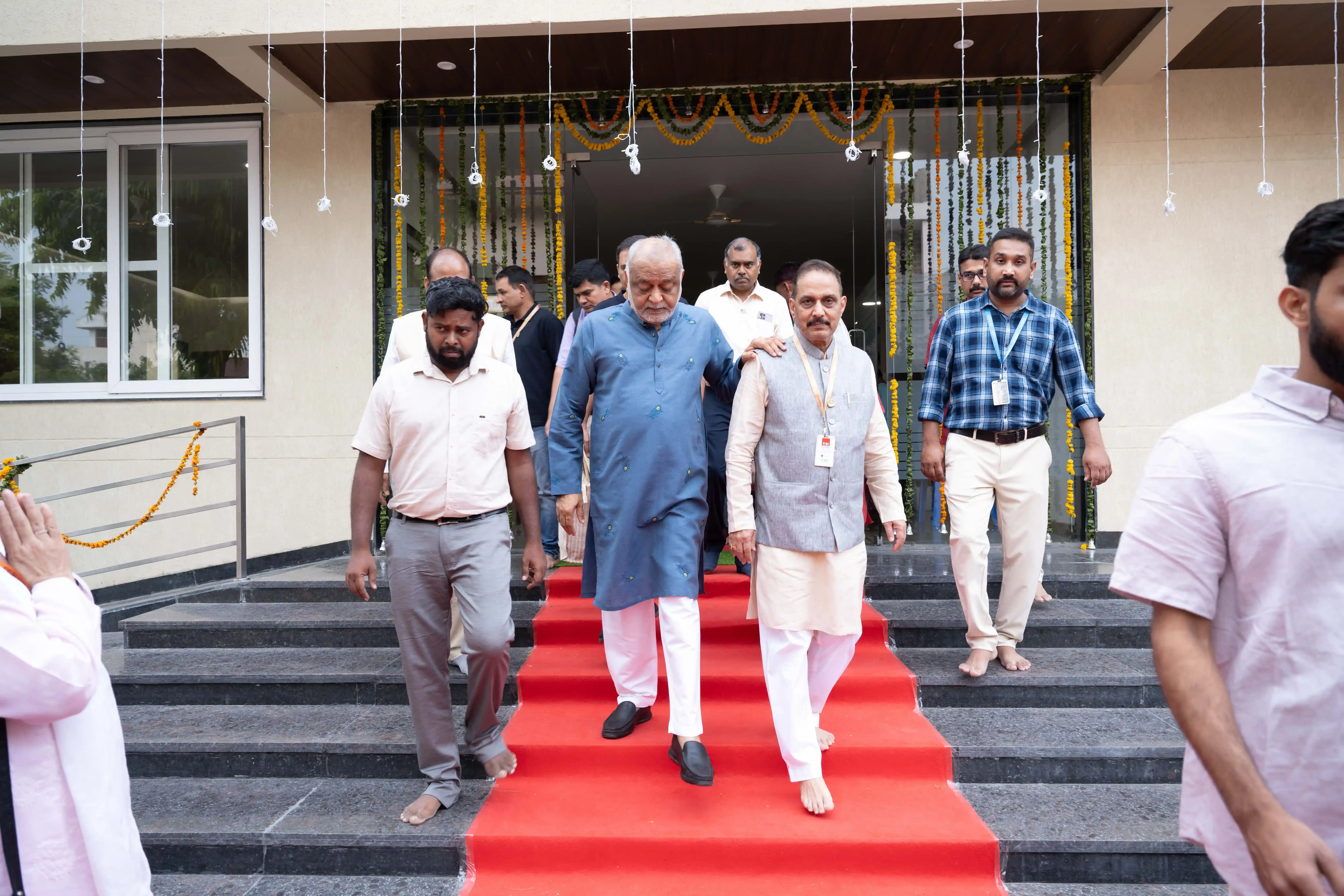

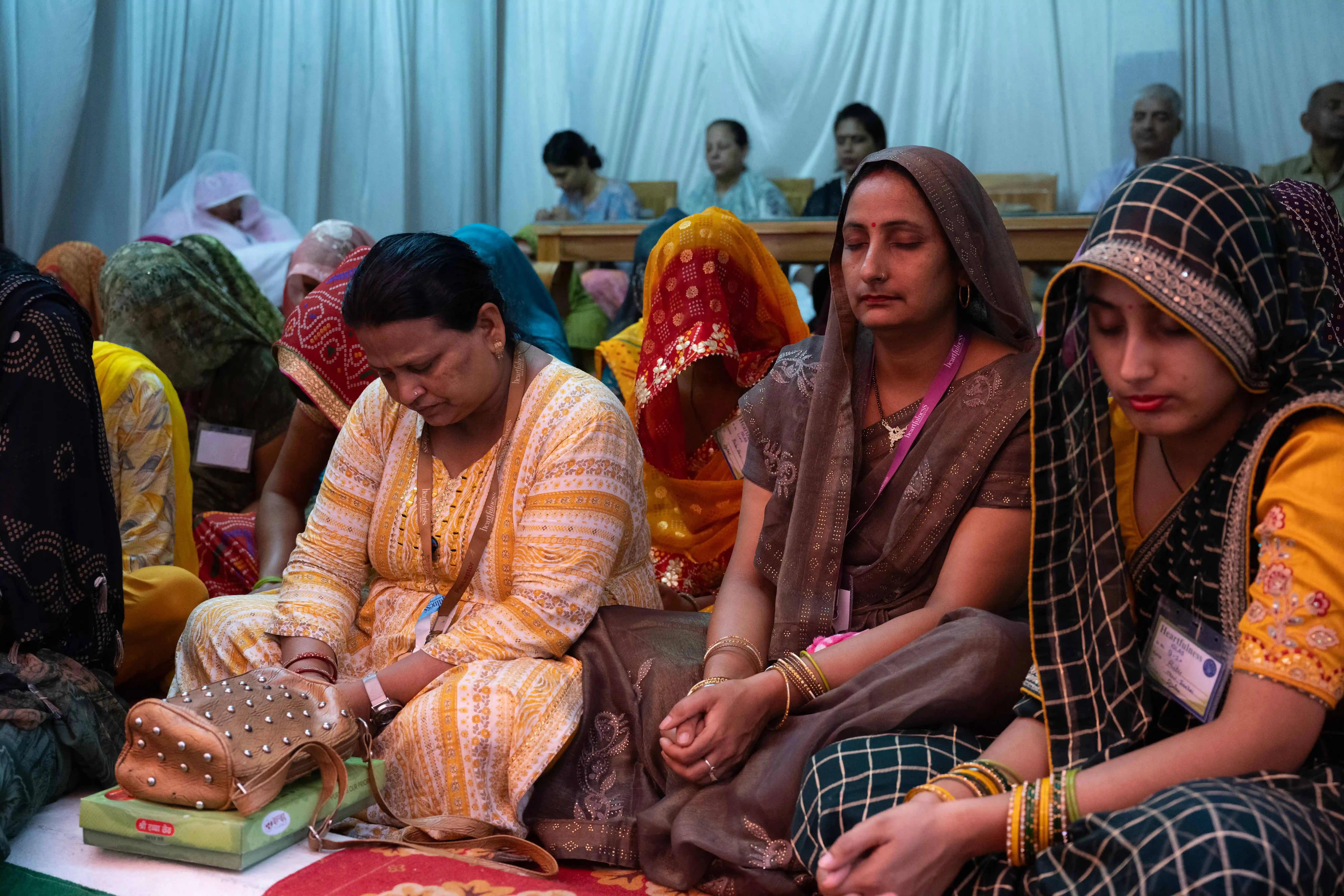
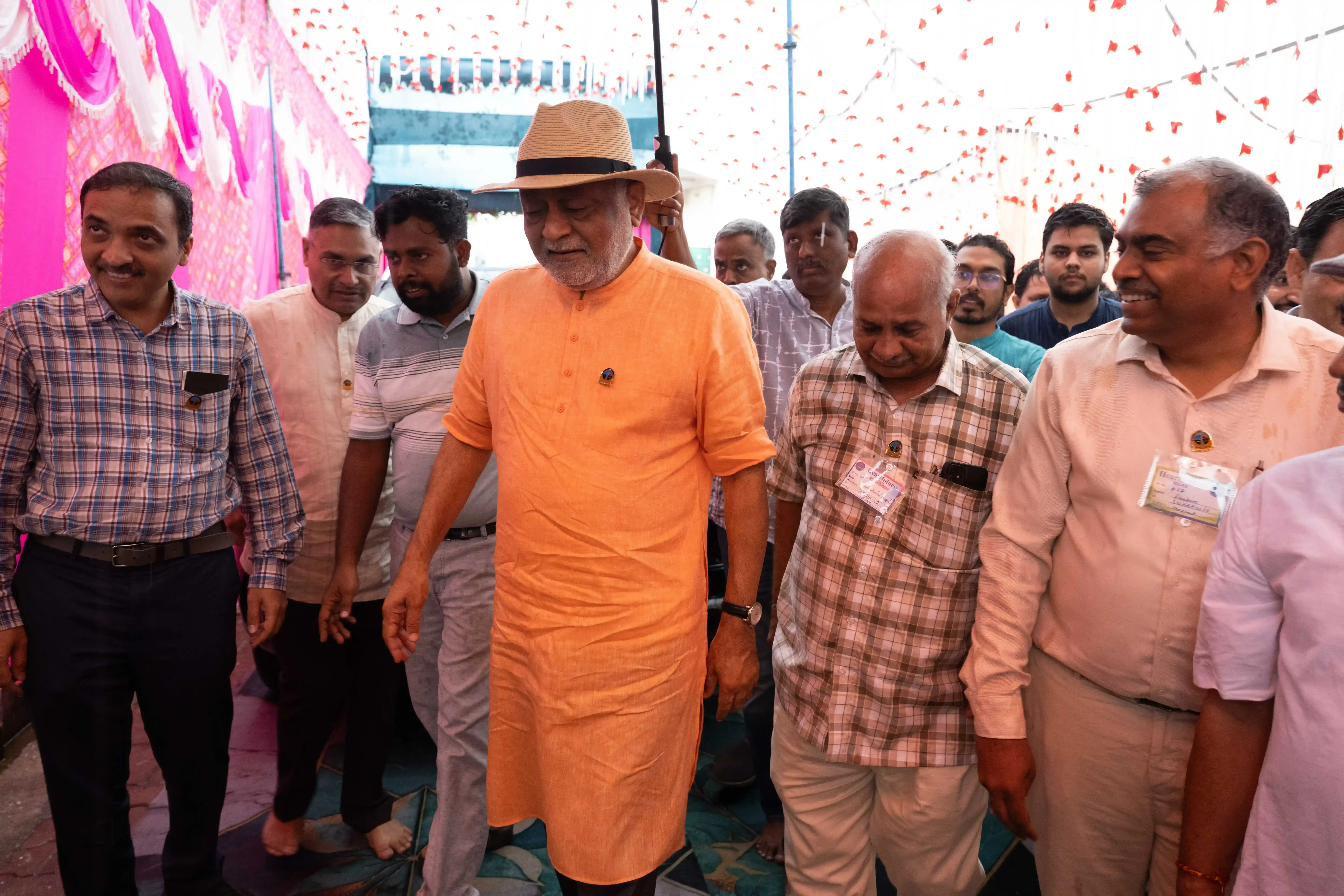
In the late afternoon, Daaji gave a 45-minute interview to Doordarshan, India’s public service broadcaster. The interview centered on the theme “Youth Challenges and Meditation.” The questions were direct, as were his responses. He spoke about the distinction between religion and spirituality, urging a natural shift toward internal transformation.
“Meditation,” he said, “must take the central role. Even in the Bhagvad Gita, Lord Krishna advises meditation on the heart, because God resides in the heart.”
Here are some excerpts from his interview translated from Hindi.
- Before changing the world, I have to change myself first. The expectation that ‘I expect the other person to change’ might bring dissatisfaction in my life. Sometimes, we are unable to change ourselves knowing full well what is good for us, then how can we change someone else—with love or with force? It is absolutely not possible.
- What is consciousness? Is it this body? Is it the mind? Is it the intellect? Is it the ego? Is it the soul? Consciousness is expressed through the coming together of all these. If there is a body but no soul, there is no consciousness. If there is a soul but no body, consciousness cannot be expressed. The mind, intellect, and ego—all assist in expressing consciousness. So we can say that consciousness is a combined state, where soul, mind, intellect, ego, and body all come together.
- To the people of Braj, once again my salutations. This is the land of Krishna. All of you must surely have the Gita in your homes. Study it. Learn something from it.
- This is Krishna’s birthplace, or the place where he spent time. Do not be proud merely of that. In his time too, there were many people, but no one recognized him. Today he is not on this land, so how will you recognize him now? So the message he gave through the Gita—study it and adopt it in life. I see that no one has adopted it yet. I will give you only one example. Read Chapter 10, verse number 20. There he has given his address. He has said that “I am in your heart.” Have you ever peeped in to see where he is?
- God dwells within. Do not wander here and there. Courage is needed to look inside. But when people dare to look inside, then what appears first? All the wrong that has been done, that alone is seen. That is why people are afraid to look within.
After the interview, Daaji met with the President of the Krishna Janmabhoomi Trust, who had come specifically to welcome him. The interaction was warm and respectful. The Trustees then took Daaji to the Janmabhoomi (birthplace).
At 6:30 p.m., Daaji conducted the evening satsangh at the Satoha Ashram, after which he retired for the day.
16 June
Daaji rose early, and after light refreshments, he prepared for a special visit—one rooted in the sacred geography of both Lord Krishna’s life and Babuji Maharaj’s biography. A small group traveled with him by car, leaving before sunrise.
Their destination was a quiet, almost-forgotten spot on the banks of the Yamuna River, where it is believed Lord Krishna was cremated. The location is marked only by a modest memorial, a single stone platform near the base of a railway bridge. At first glance, it appears ordinary, easy to miss. But its significance is known within the tradition, recorded in the biography of Babuji Maharaj, and preserved now through Daaji’s attention.
Chairs had been arranged along the riverbank. Despite the overcast sky, a few abhyasis had gathered. As Daaji conducted a short meditation, the sound of distant thunder began to roll, and light rain started to fall as though the moment itself was being marked from above.
From there, the group continued to the nearby village of Iglas, located in the heart of Uttar Pradesh. On the surface, it looked like many other villages—narrow lanes, modest homes, small temples—but there was something unique there: almost every household in Iglas belongs to an abhyasi.
The villagers had prepared a tent next to their small local ashram. Daaji conducted meditation under the tent as rain fell steadily, soaking many of the abhyasis seated at the edges. But no one moved. The silence was deeper than the weather.
After meditation, Daaji moved to a tiny room inside the one-room cottage used as the ashram. There, he remained for some time as abhyasis entered one by one to meet him. He gave each of them time, listening, exchanging a few words, or simply sitting together in silence. From Iglas, Daaji proceeded towards Aligarh, arriving there in the early evening.
Stay tuned for more events from Daaji’s travels in Aligarh, Uttar Pradesh.
